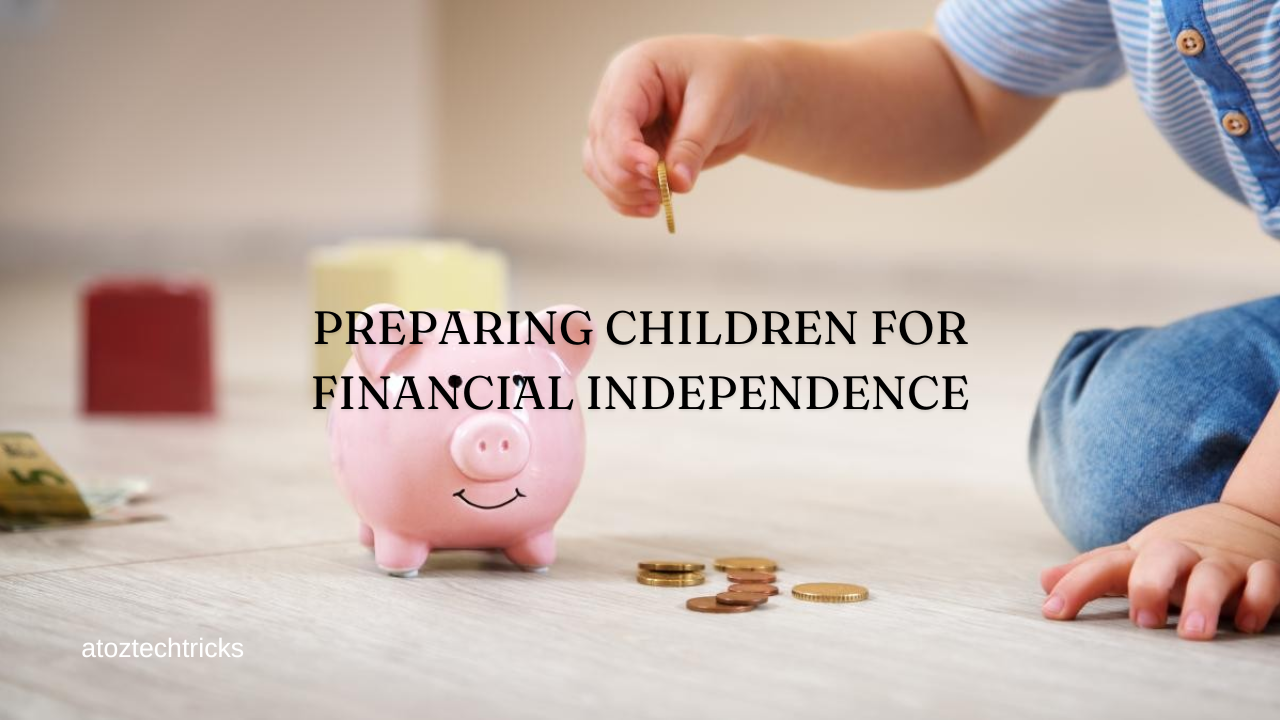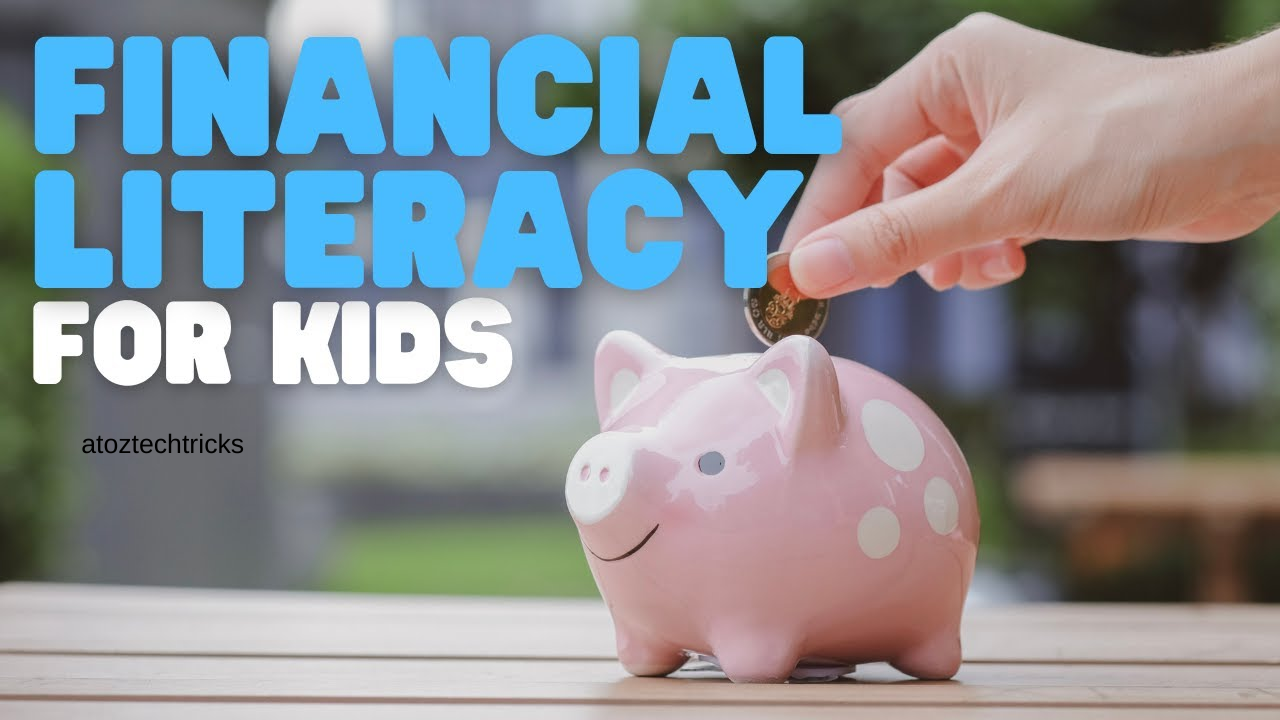Preparing Children for Financial Independence: A Comprehensive Guide
Financial independence is a goal many adults aspire to achieve, but the journey towards it can begin much earlier in life. Preparing children for financial independence involves equipping them with the knowledge, skills, and habits needed to manage their finances effectively. This guide will explore strategies to help parents and guardians teach children about money management, budgeting, saving, investing, and understanding the value of financial independence.
The Importance of Financial Education
Early Exposure to Financial Concepts
Introducing children to financial concepts at an early age can foster a positive attitude towards money. Early exposure helps demystify financial topics and builds a foundation for more advanced discussions as they grow older. Financial education is not just about teaching children to save money but also about instilling values such as responsibility, discipline, and the ability to make informed decisions.
The Impact on Future Success
Studies have shown that children who receive financial education are more likely to make sound financial decisions in adulthood. They tend to save more, avoid excessive debt, and plan for their financial futures more effectively. By preparing children for financial independence, parents can significantly impact their long-term financial well-being and success.
Handling Unexpected Financial Situations with Children: A Comprehensive Guide
Teaching Basic Financial Concepts
Understanding Money
Before diving into complex financial topics, children need to understand the basic concept of money. Start by teaching them about different denominations of currency, the role of money in transactions, and the concept of earning. Simple activities like playing store or using play money can make learning about money fun and engaging.
Earning Money
Introduce children to the concept of earning money through work. Encourage them to take on age-appropriate chores or small jobs, such as helping with gardening or pet sitting, to earn their own money. This experience teaches them the value of hard work and helps them understand that money is earned through effort and productivity.
Saving and Spending
Teaching children the difference between saving and spending is crucial. Use jars or envelopes to help them visually separate their money into categories such as “saving,” “spending,” and “giving.” This method reinforces the idea of budgeting and helps children develop a habit of saving for future needs.
Creating a Budget
The Basics of Budgeting
Budgeting is a fundamental skill that everyone should master. For children, budgeting can be introduced through simple activities like planning a small allowance or managing money received as gifts. Teach them to allocate their money into different categories, such as savings, spending, and charity, to create a balanced budget.
Using Budgeting Tools
Introduce children to basic budgeting tools, such as spreadsheets or budgeting apps. As they grow older, these tools can help them manage more complex financial responsibilities. Encourage them to track their spending and compare it against their budget to develop a sense of financial discipline.
Saving for the Future
Setting Savings Goals
Encourage children to set specific savings goals. Whether it’s saving for a toy, a special outing, or a long-term goal like a college fund, having clear objectives helps children understand the purpose of saving. Teach them to break down their goals into smaller, manageable steps and track their progress.
The Importance of Compound Interest
As children become more familiar with saving, introduce them to the concept of compound interest. Explain how money can grow over time when it earns interest. Use simple examples and tools like online calculators to demonstrate how saving early can lead to significant financial benefits in the future.
College Savings: A Comprehensive Guide to Building a Future Fund
Introducing Investment Concepts
The Basics of Investing
Investing is an essential aspect of financial independence. Start by explaining the concept of investing and how it differs from saving. Discuss basic investment options such as stocks, bonds, and mutual funds, and emphasize the importance of long-term growth.
Simulating Investments
Use simulation tools or investment games to help children understand the dynamics of investing. These tools provide a risk-free environment for experimenting with different investment strategies and observing how they perform over time.
Encouraging Research and Decision-Making
As children become more interested in investing, encourage them to research different investment options and make informed decisions. Guide evaluating investment opportunities and understanding the risks involved. This experience builds critical thinking skills and fosters a proactive approach to financial management.
Understanding Credit and Debt
The Concept of Credit
Introduce children to the concept of credit and how it works. Explain how credit cards, loans, and interest rates function. Use simple examples to illustrate the benefits and drawbacks of using credit.
Responsible Credit Use
Teach children about responsible credit use by discussing the importance of paying off credit balances on time and understanding interest rates. Encourage them to practice good credit habits by using a prepaid card or a secured credit card under supervision.
Avoiding Debt Pitfalls
Discuss the potential pitfalls of excessive debt and how it can impact financial health. Emphasize the importance of living within one’s means and avoiding unnecessary debt. Share real-life examples and strategies for managing debt effectively.
Building Financial Habits
Encouraging Savings Habits
Promote the habit of regular saving by setting up automatic transfers to savings accounts or using savings challenges. Encourage children to make saving a routine part of their financial activities and celebrate their achievements.
Teaching Money Management Skills
Help children develop strong money management skills by involving them in family financial discussions and decision-making. This involvement provides practical experience and reinforces the importance of financial responsibility.
Leading by Example
Children often model their behaviour after their parents. Demonstrate good financial habits by managing your finances responsibly. Share your financial goals and strategies with your children to provide them with real-life examples of financial management.

Preparing for Financial Independence
Building a Strong Financial Foundation
A solid financial foundation is crucial for achieving financial independence. Help children develop a strong understanding of personal finance, including budgeting, saving, investing, and managing credit. Encourage them to start building their financial foundation early to set themselves up for success.
Setting Long-Term Financial Goals
Encourage children to set long-term financial goals, such as saving for higher education, buying a home, or planning for retirement. Help them develop a plan to achieve these goals and regularly review their progress. Setting and working towards long-term goals reinforces the importance of financial planning and discipline.
Preparing for Life Transitions
Prepare children for significant life transitions, such as going to college or starting their first job. Discuss the financial implications of these transitions and help them develop strategies for managing their finances effectively. Guide budgeting, managing expenses, and making informed financial decisions.
Resources and Tools for Financial Education
Books and Educational Materials
There are numerous books and educational materials available to help children learn about personal finance. Look for age-appropriate resources that cover topics such as budgeting, saving, investing, and understanding credit. Some popular titles include “Money Sense for Kids” by Hollis Page Harman and “The Everything Kids’ Money Book” by Brette Sember.
Online Resources and Apps
Leverage online resources and apps designed to teach children about money management. Many websites and apps offer interactive games, budgeting tools, and educational content tailored to different age groups. Examples include the “PiggyBot” app and the “Bankaroo” virtual bank.
Financial Education Programs
Explore financial education programs and workshops offered by schools, community organizations, and financial institutions. These programs often provide valuable information and hands-on experience in managing finances. Encourage children to participate in these programs to enhance their financial knowledge and skills.

Preparing children for financial independence is a critical aspect of their overall development. By teaching them basic financial concepts, budgeting, saving, investing, and understanding credit, parents can equip their children with the tools and knowledge needed to achieve financial independence. Starting early and providing ongoing guidance and support can help children develop strong financial habits and make informed decisions throughout their lives.
Financial education is a lifelong journey, and the skills learned during childhood can have a lasting impact on a person’s financial well-being. By investing time and effort in preparing children for financial independence, parents can set them on a path towards a secure and prosperous future.





Post Comment